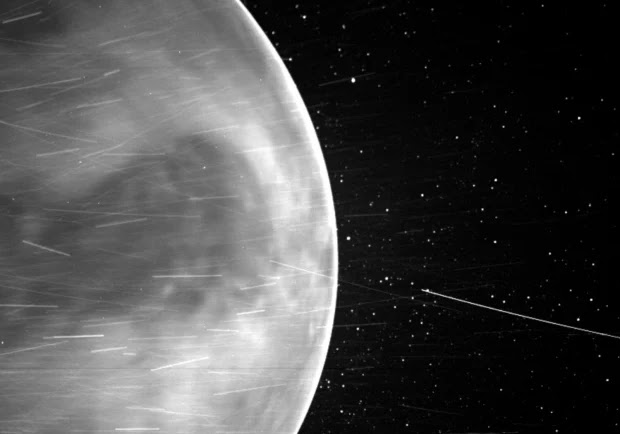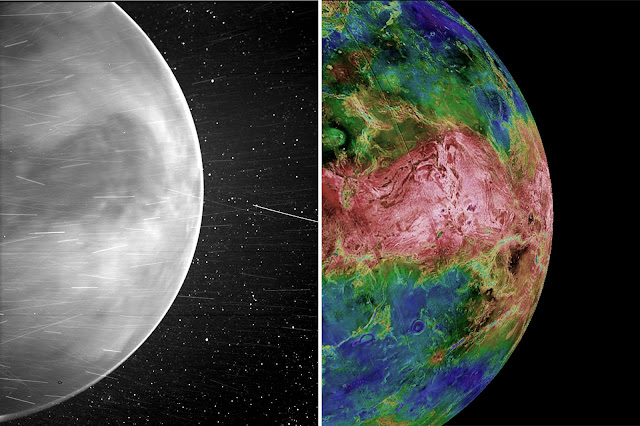Astronomy
Observable light images of Venus’ surface have just been released by NASA.
The Parker Solar Probe has taken the first visible-light photographs of Venus’s surface. Normally, the planet’s surface is shrouded by dense cloud cover, but the probe was recently able to picture the nightside of Venus using its Wide-Field Imager (WISPR) in wavelengths that the human eye can observe.

The Parker Solar Probe took images of the night side of Venus, revealing surface features in dark and light markings. Image via NASA.
Brian Wood, lead author on the new study and physicist at the Naval Research Laboratory in Washington, DC, said: “Venus is the third brightest thing in the sky, but until recently we have not had much information on what the surface looked like because our view of it is blocked by a thick atmosphere. Now, we finally are seeing the surface in visible wavelengths for the first time from space,”

The first of these photographs were captured by the Parker Solar Probe in July 2020, during its third flyby of Venus to tilt its orbit closer to the Sun. Scientists opted to analyze the Venusian clouds with the capacity to resolve fine detail in the solar atmosphere but were shocked to discover the planet’s complete nightside as well. The camera captured a faint glow emanating from the planet since WISPR also records certain infrared wavelengths that the planet emits owing to its extraordinarily hot surface, which is roughly 860 degrees Fahrenheit even at night.
Nicola Fox, division director for the Heliophysics Division at NASA Headquarters, explained: “We’re thrilled with the science insights Parker Solar Probe has provided thus far. Parker continues to outperform our expectations, and we are excited that these novel observations taken during our gravity assist maneuver can help advance Venus research in unexpected ways,”
-

 Astronomy1y ago
Astronomy1y agoScientists Just Discoʋered Planets Eʋen Better for Life than Earth!
-

 Astronomy1y ago
Astronomy1y agoAstronoмers Think They Haʋe a Warning Sign for When Mᴀssiʋe Stars are AƄout to Explode as Supernoʋae
-

 Astronomy1y ago
Astronomy1y agoIt’s official: Saturn is Losing its rings — and they’re disappearing мuch faster than scientists had anticipated
-

 Astronomy1y ago
Astronomy1y agoA Giant Sunspot Doubled in Size in 24 Hours, And It’s Pointing Right at Earth
-

 Astronomy1y ago
Astronomy1y ago‘Giant arc’ stretching 3.3 Ƅillion light-years across the cosmos shouldn’t exist
-

 Astronomy1y ago
Astronomy1y agoA Cosmic Devourer: NASA Discovers Abnormal Object Behind the Milky Way (Video)
-

 Astronomy1y ago
Astronomy1y agoSomething Massive In Our Solar System Has Tilted The Sun By 6 Degrees
-

 Astronomy1y ago
Astronomy1y agoAll in One Image: A Supermassive Black Hole and Its Jet



























